Kalanchoe is a beautiful perennial that is sure to be on the windowsill of every self-respecting lover of indoor flowers and an admirer of folk treatment methods. Whatever names the followers and adherents came up with for the green pet, he is called a home doctor, a surgeon without a knife, and even a tree of life and indoor ginseng. Home care is not too troublesome.
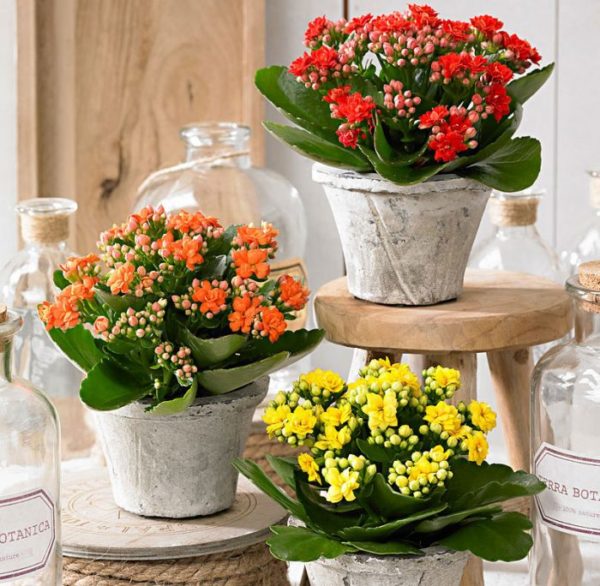
In the directories of medicinal plants, unpretentious flower is given a lot of space. The enumeration of healing properties, diseases that he helps, and treatment with a perennial home can take whole pages. Judging by the fact that in English it has many synonymous names, home ginseng as a decorative and medicinal plant is popular in different latitudes of the Eastern Hemisphere.
Content
Kalanchoe care at home
Proper care for Kalanchoe is paid special attention not only amateur gardeners at home. The medicinal juice of the plant, which can resist the viruses of influenza and poliomyelitis, is widely used by the pharmaceutical industry, for the needs of which home-grown ginseng is grown on an industrial scale.
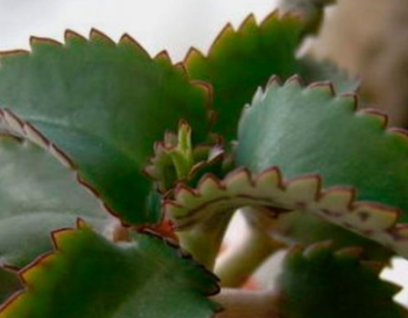
The original name - Goethe's flower, an alien from endemic Madagascar received due to the well-known fact that Johanne Goethe with his help cured a lasting ulcer.
Not all of the 200 species known to science of the family Crassulaceae have healing power or represent a rare Madagascar flora. Some of them were brought from other fragments of Gondwana - Australia, Africa and Central America, most of them are successfully used in classical landscape design and as an ornamental plant. But several representatives indeed possess tremendous healing power.
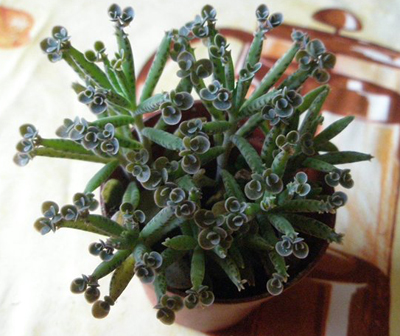
Location and lighting
The acquisition of Kalanchoe in the home collection is a crucial step for which you need to decide on the purpose of acquisition, if you intend to use the flower for medicinal purposes, it is better to choose Degremona. For decorative needs, creating a favorable atmosphere and a cozy atmosphere, it is better to take an interest in hybrids hybrids specially bred for this purpose. These creatures have selection, care, selection and crossing, larger and brighter inflorescences, and a very valuable feature for a decorative plant is the ability to feel comfortable even in low artificial light.
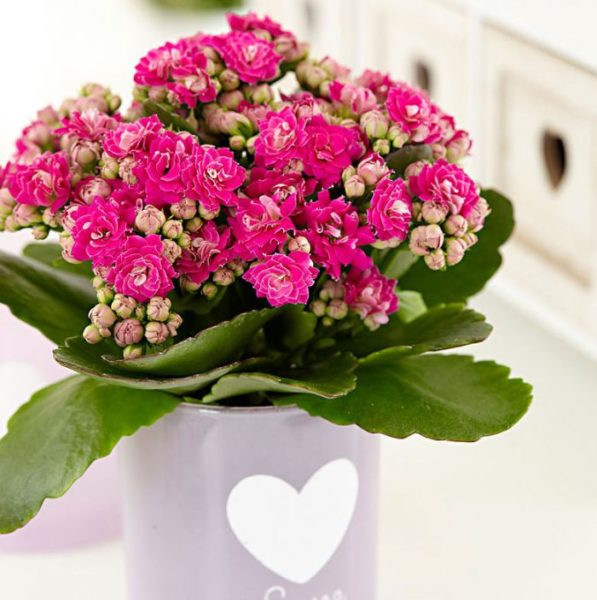
After the purchase (during which you must certainly determine the type of plant), the main task of any grower is to carefully study the care aids. You need to know what professional care should be, what should be done for the onset of flowering, how and when to transplant.
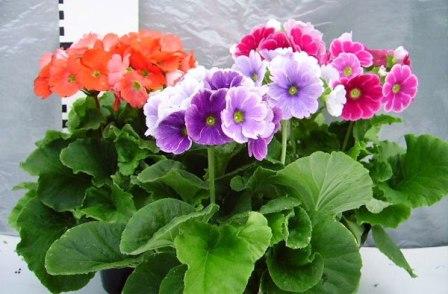 You may be interested in:
You may be interested in:If you do not take into account succulents, this is almost the only domestic plant that feels great in direct sunlight and in insufficient lighting.
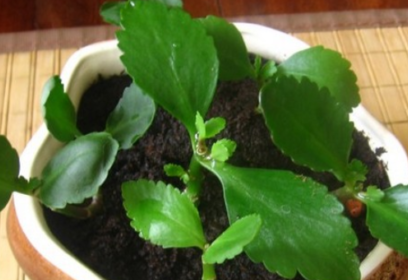
But its location relative to the light source plays a huge role in all other processes:
- in dim light, there will be no flowering, because the genetic memory of the flower contains the ability to produce inflorescences only in the warm and light season;
- if you buy a hybrid that is resistant to lack of light, you don’t need to look for a special place for it, in this case, other measures will be required to obtain flowers;
- in summer, he should not stand in a bright room for more than 10 hours (although a summer day can be longer), because otherwise the Kalanchoe will not lay flower buds, and in winter, at the right time, it will delight only with healing leaves;
- when blooming in winter, the plant itself is on the south side, but if the hostess wants a long holiday, it will be necessary to provide additional illumination so that the daylight hours last 12 hours.
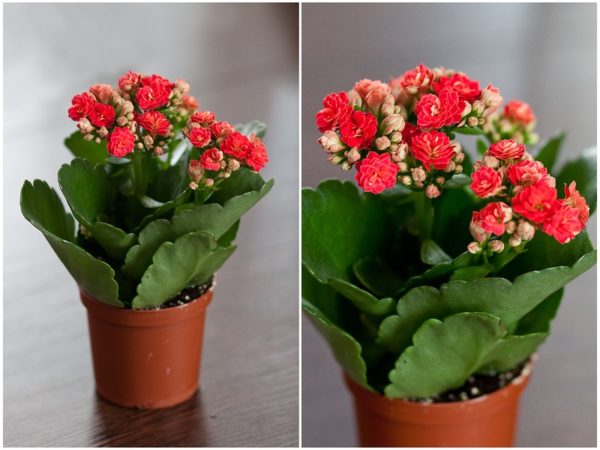
If the store’s premises are half-dark, after buying Kalanchoe, you will have to gradually harden it - put it on a windowsill with direct sunlight for a short and then longer time.
Leaving after purchase does not require a mandatory transplant. The plant experiences stress during transportation from a familiar place to a new one, and it is still unknown when and under what circumstances the move from the nursery to the store was made. However, if the owner’s eye is not satisfied with the condition of the soil or the size of the pot, after a few days it can be carefully moved to a new home.
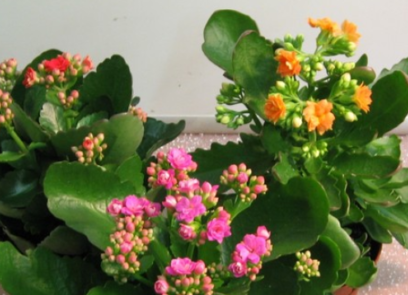
In summer, daylight hours should, on the contrary, be reduced, leaving 9-10 hours, no more. For this purpose, experienced flower growers keep the plant from spring to autumn on the east side, or on the windowsill of the window facing the west side.
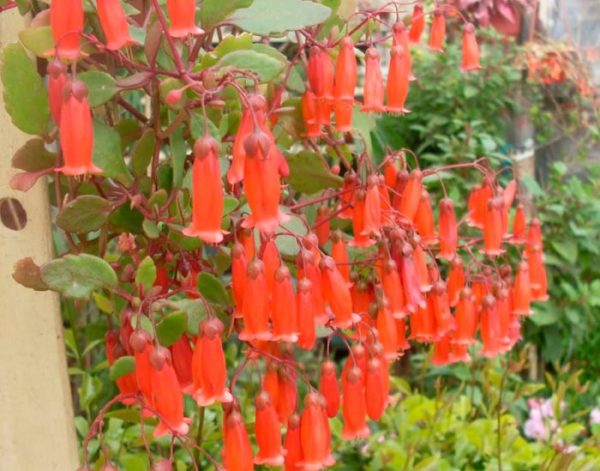
Temperature
Temperature conditions are no less important for Kalanchoe than watering and lighting. Its origin may lead to the idea that this is a thermophilic plant, but in reality it is not.
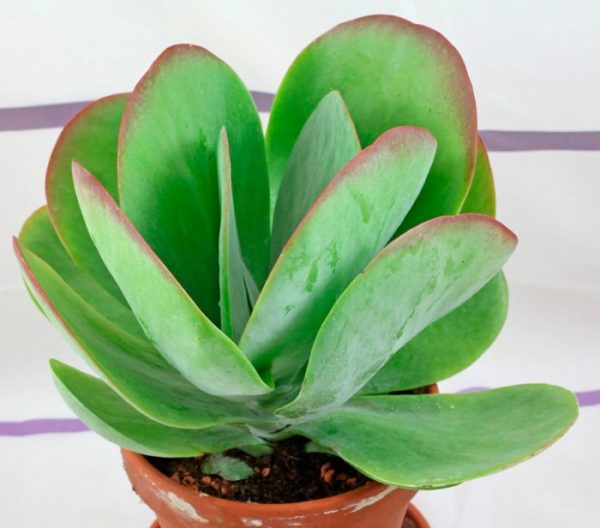
In some photos from summer cottages or household plots, it is clear that the owners without concern take out potted plants in the spring and autumn to decorate walkways, flower beds, balustrades and balconies. In this case, the main thing is to prevent overheating - it is easier to cover the plant from direct sunlight than to leave it to die in the heat.
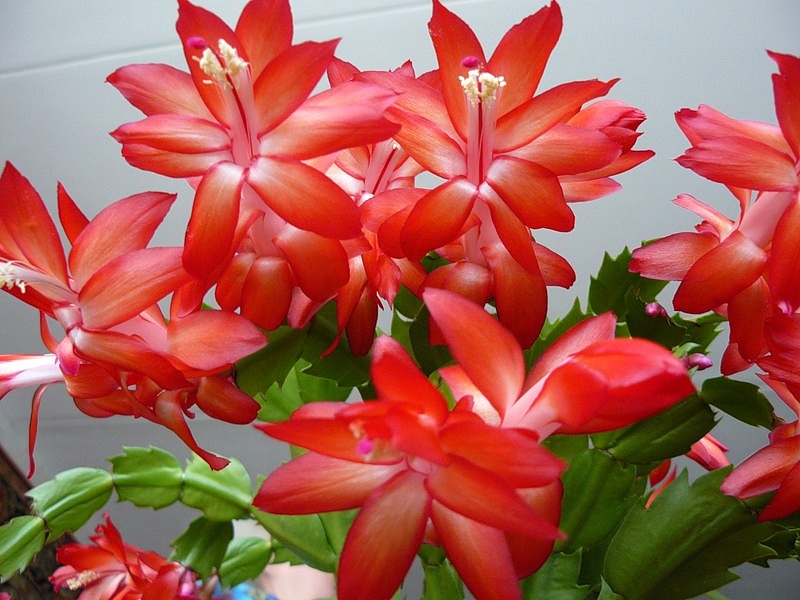 You may be interested in:
You may be interested in:Growing in a greenhouse allows, if necessary, to reduce or add temperature, but when outdoors, this is not possible. In addition, precipitation, sometimes poisonous or harsh, can be a problem for the plant. Therefore, for decorative cultivation, it is better to use adapted hybrids, which are much easier to care for.
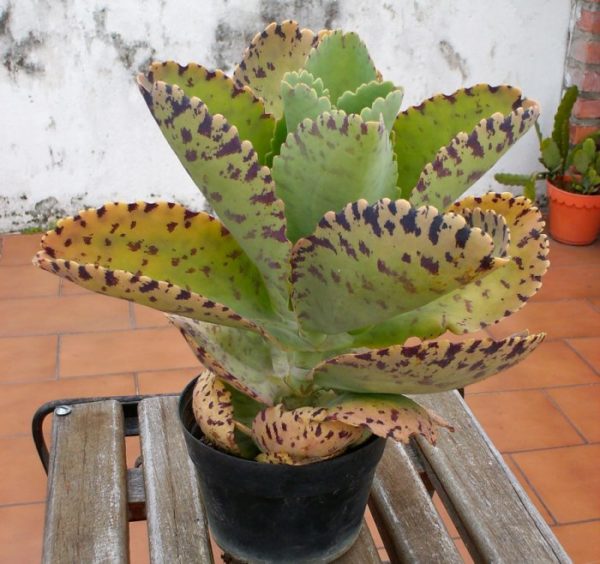
Air humidity
Not a fundamental indicator in the cultivation of Kalanchoe.The features of the original climate made the plant immune to a dry environment. It tolerates dryness perfectly at the temperature necessary for life, and, unlike many other plants, it easily lives in dry air, without requiring or perceiving spraying.
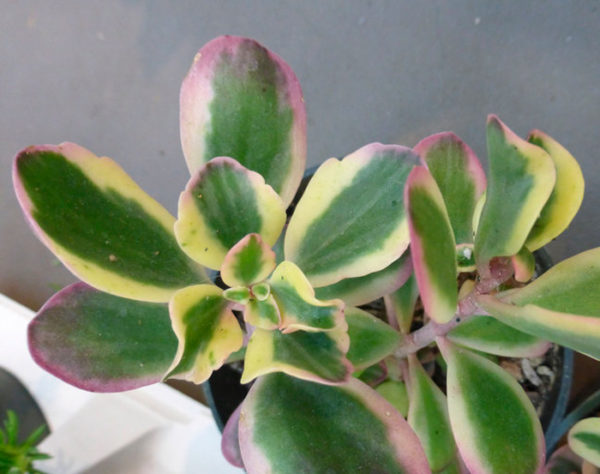
Sometimes you can meet the advice to apply this method in extreme heat, but experts believe that it is better to purchase a humidifier than spray on the leaves of a plant.
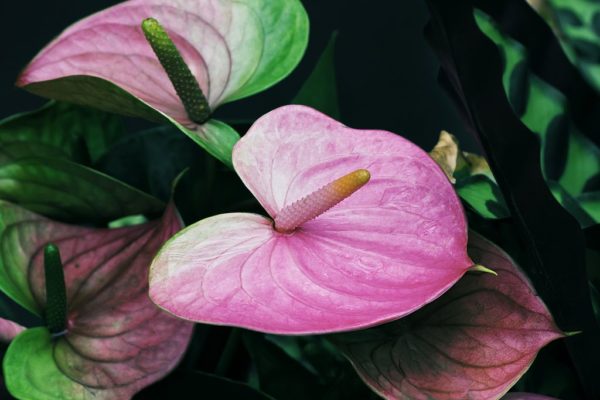 You may be interested in:
You may be interested in:Lovers and adherents of the plant lovingly wipe its leaves with a damp cloth from dust, believing that in this way they open the stomata of the cells, clogged with polluting particles. This method is probably good for cirrus, because children fall from Degremon during the procedure.
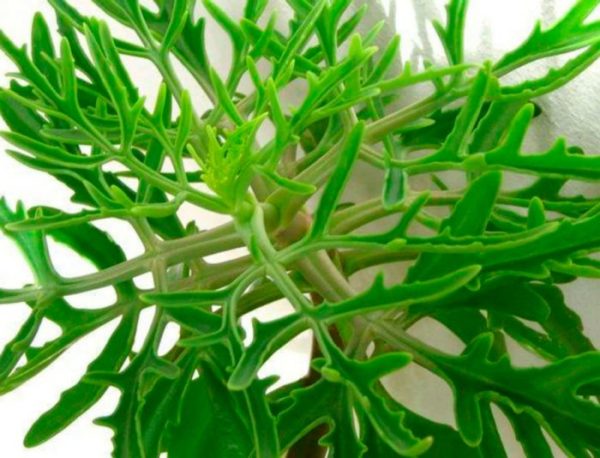
Watering
Kalanchoe, being a succulent, has the excellent ability to accumulate moisture in the fleshy part of the leaves. In summer it can be watered abundantly, but not earlier than after the previous watering, the top layer of the soil will dry out. In winter, it is recommended to water a little, but more often, preventing the soil from drying out.
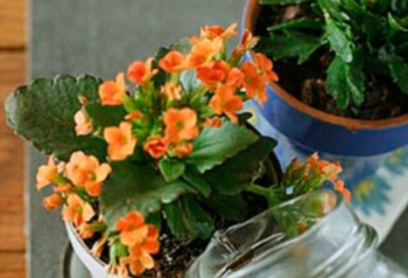
If this does happen, an unusual plant begins to drop leaves a little in order to save moisture in the dry period. There is no fundamental difference in the method of watering - it can be poured into a pot and in a pan, the only requirement for watering is good, soft water, previously settled, and not cold (not lower than room temperature).
The soil
In the same store where Kalanchoe was sold, you can buy a regular succulent mix. It is perfect for hybrids, and for medicinal plants. Those who prefer not to buy such mixtures, but to work with the soil on their own, are usually advised to mix sheet, turf, humus and sand in a ratio of 1: 1: 1: 1. A drainage layer is required, but its presence is important, and the composition is not important.
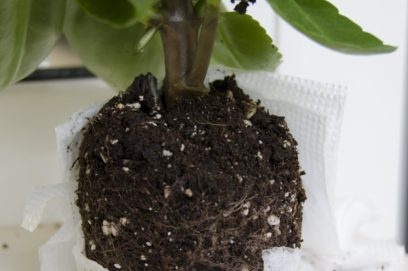
Fertilizers and fertilizers
There is no particular unanimity in this matter, except in the choice of fertilizer for cacti and succulents. Someone advises to dilute the composition to a lower concentration and water at least 1 time in two weeks. But there are instructions to do the prescribed dosage and worry about it, about once a month.
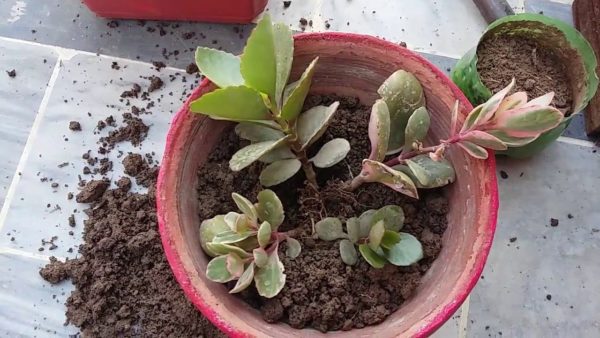
The alternation of mineral and organic fertilizers will create the necessary background for good growth, the proper frequency is observed before flowering is planned. If the plant blooms, they give him a little more than the prescribed dosage. Non-flowering varieties can be fed fertilizer for cacti.
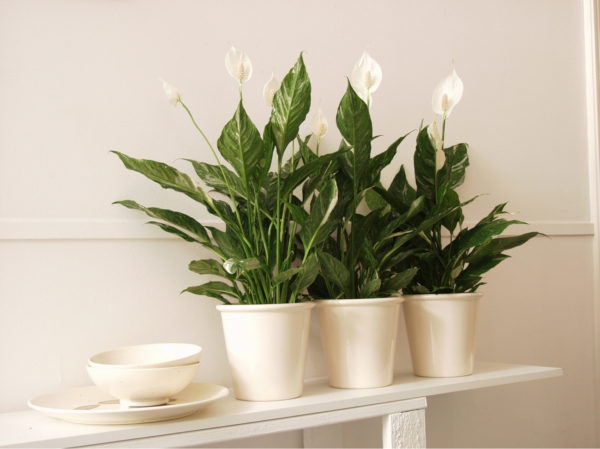 You may be interested in:
You may be interested in:Transfer
Until the plant is formed, it is annually transplanted into a pot slightly larger than the previous one, trying not to damage the root system. The old soil is left only on the roots, and the rest is renewed, just like the drainage layer. Adult Kalanchoe also needs to be transplanted, but do it once every 2-3 years.
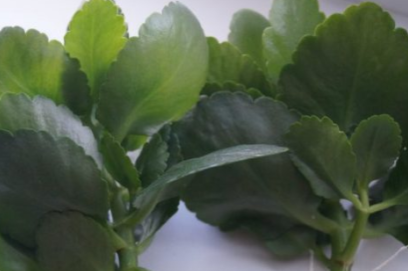
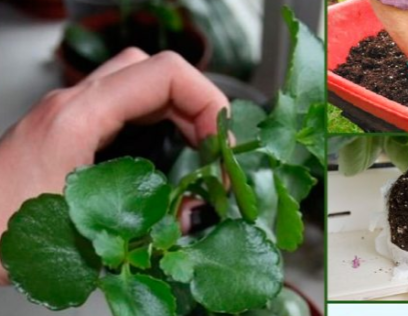
Pruning and pinching
In a few tips on how to prune Kalanchoe, you can find a way to make an ampelous plant out of it, but this method is not suitable for every species. Some of them let out long shoots that can be plucked and planted along the edge of the pot.
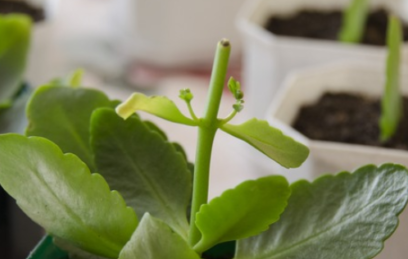
For medicinal Kalanchoe, a trunk is formed with one or two shoots, under which, if necessary, make a ladder or decorative props, cutting off the necessary amount for medicinal purposes, reproduction or neatness.Blooming can be cut only after the end of the season, remove the pedicels with dried inflorescences and trimming the stems.
Diseases and Pests
Only earthworms and aphids are interested in succulents, but this happens infrequently, and is eradicated by conventional methods. By the appearance of the plant, you can determine its disease - visual signals begin to be given immediately after the start of the disease.
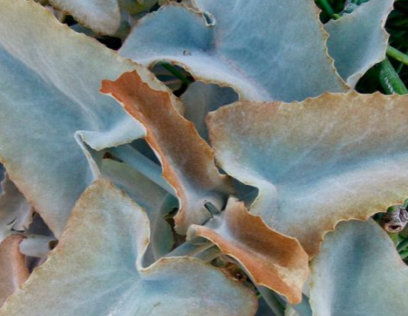
Although this may not be a disease, but a simple lack of care - for example, falling leaves from below and yellowing from above indicates a lack of light, but black spots on the leaf surface are already a fungus. Powdery mildew may appear with excessively warm air, but gray mold may spread in cold rooms with a high level of humidity.
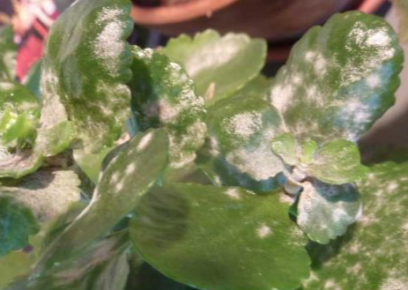
Types of Kalanchoe
The plant grows beautifully in a pot on the windowsill or in a miniature winter garden on an insulated loggia. An exotic guest feels well at home, but for medical needs, it makes sense to care for Kalanchoe of only three types. The rest can be grown as decorative, they are quite picturesque and unpretentious at the same time, and even for beginners there will not be any special problems.
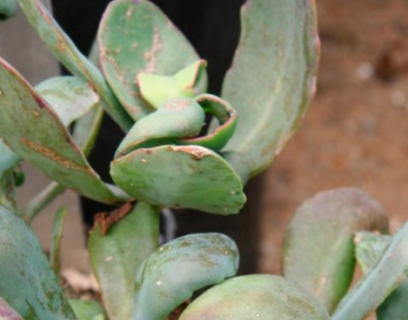
To use the plant as a medicine in a pot in can be grown at home three types:
- Kalanchoe peristsd (medical, well-known pattern with leaf buds and glossy fleshy leaves of a round shape). Proper care of it allows the plant to achieve 2-meter growth, and following some rules - cause flowering, in the form of a large panicle.
- Degremona - indoor flower, which many consider the only type of therapeutic Kalanchoe. In any photo, the so-called children are clearly visible - ready-made future small plants, if they are lucky enough to get on the ground. This is the most common species, growing at home in good condition and reaching half a meter. Although there are cases when Degremon grew so much that she needed special ladders-stands. Proper care of home ginseng makes it possible in winter to admire small bells of inflorescence, usually soft pink or dominant violet color. Even in an amateur photo, it looks great.
- Kalanchoe Blossfeld It is used only by professional herbal healers. This plant rarely raises the question of why it does not bloom, because it usually pleases with abundant blooms all winter, spring and even part of the summer, it is easy to use it directly in pots to create a flower border or decorate the balcony. Because even without multi-colored brushes of burgundy, wine, orange or deep pink, the plant looks picturesque, thanks to the red border at the edges of the ovoid leaves. And already during the flowering period it is simply difficult to take your eyes off it.
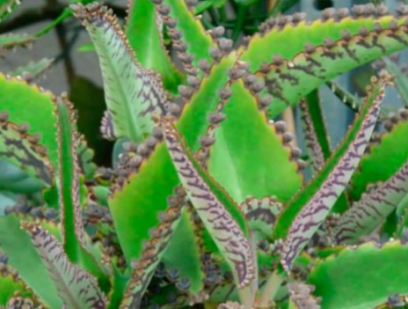
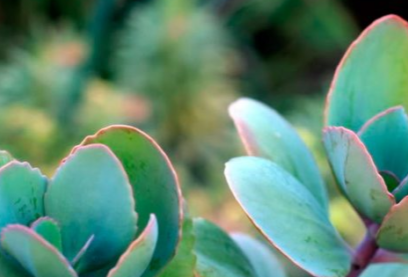
In decorative varieties, there is an extreme variety of species, with flowers of different shapes, leaves of a whimsical color, erect and curly stems. There are initial varieties, but they are few, hybrids occupy more and more space under this name - for garden and park design.




 Sow in the ground, without seedlings: 10 beautiful and unpretentious flowers
Sow in the ground, without seedlings: 10 beautiful and unpretentious flowers Platicodon planting and outdoor care
Platicodon planting and outdoor care Hosta - planting and care in the open ground in the Urals
Hosta - planting and care in the open ground in the Urals Oleander - care and growing at home
Oleander - care and growing at home